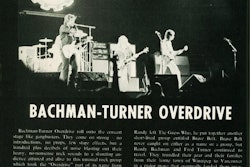Summer Ready
Changing your engine coolant on schedule helps preserve cooling system and engine life
Engine coolants come in two varieties — ELC and Fully-Formulated. While coolant can last 600,000 miles or more, it eventually needs to be changed to remove dissolved solids or recharge protection.
Here are the steps:
1. Allow the engine to cool to 160 degrees F. If the engine is cold, run it until it just reaches that temperature.
2. Shut the engine off and chock the wheels. Remove the radiator or overflow tank pressure cap and place a drain pan under the radiator.
3. The drain cock is either on the bottom tank of the radiator or on the lower radiator hose. Turn the drain cock to open. Note drain cocks often turn clockwise and screw inward to open and then open the cock all the way and allow the coolant to drain into the pan. If there is a drain plug in the block, remove that, too, using a separate drain pan if it’s too far from the radiator drain cock.
4. Once coolant stops draining, screw the drain cock closed and replace the in-block drain plug.
5. Fill with tap water to within one inch of the top of the radiator or overflow tank. Some tanks have a cap on the side that can be removed for easier access with a hose.
6. Replace the radiator cap, start the engine, and set it to idle at about 1,400 rpm, using the hand throttle or electronic throttle control. Watch for the water level to drop as the thermostat opens and add water to keep the system full.
7. Turn on the cab heater and open the two isolation valves. Once the temperature is constant, idle the engine for 15 minutes to circulate the coolant. Return the engine to idle and shut it down.
8. When the engine has cooled to 160 degrees F., remove the radiator or overflow tank pressure cap and open the drain cock and, if applicable, remove the plug from the block.
9. If the rinse water is not almost clear, repeat Steps 5-7 to further flush out the system.
10. Close the radiator drain cock finger tight (see illustration 4). If you’ve removed the engine drain plug, coat the threads with sealer and install it just snug.
11. Replace the appropriate coolant filter, a maintenance-dose filter or, ideally, a need-release type filter, if using Fully-Formulated antifreeze. If using ELC and the engine has a coolant filter, either bypass the unit, or replace the filter with a “zero-charge” or “blank” filter that will not add SCAs.
12. Fill the system with your replacement ELC or Fully-Formulated antifreeze.
13. If you’ve mixed the water and coolant yourself, use a refractometer to check the protection level. It should be -34 degrees F in most climates — a 50/50 mix. In extreme climates, it may be as low as -60 degrees F, a mix of 60 percent antifreeze and 40 percent water. To get more protection, drain coolant out and add pure antifreeze. If needing less protection, drain coolant and add de-ionized water.
14. Run the engine until the thermostat opens and then top off the system. Check the level and add more if necessary over the next day or two as air works its way out of the system.
COOLANT REPLACEMENT
Level of difficulty (scale 1-10 with 10 most difficult): 4
Tools needed:
1. Adjustable pliers to grasp drain cock.
2. Adjustable wrench to remove engine block drain plug.
3. Sealer for the drain plug, if applicable.
4. Large drain pan (get two if there is a drain plug that’s not near the radiator drain cock).
5. Coolant filters, including a “maintenance-charge” filter or, preferably, a need-release type filter if using Fully-Formulated antifreeze. A “blank” or “zero-charge” filter if using ELC and the engine has a coolant filter fitting.
6. ELC or Fully-Formulated coolant pre-mix 50/50. If using straight antifreeze, de-ionized water. (Check owner’s manual for cooling system capacity.) You’ll need to use straight antifreeze and de-ionized water if seeking protection below -34 degrees F.
7. A refractometer or ball type freeze point indicator if not using 50/50 pre-mix coolant.
PRODUCT EVALUATION
Bill Ramsey has figured out how to add the right amount of Pencool 3000 from a bottle, but he admits a much easier method of adding SCAs is to use a Penray Need-Release filter. The filter is normally replaced every 15 months or 150,000 miles.
The Penray Need-Release filter maintains the SCA level even though the initial charge of Fully-Formulated antifreeze tends to deteriorate. It’s a standard cartridge filter, but contains a membrane that acts like a chemical screen door that keeps SCA levels constant.
Several brands are on the market, and many tend to regulate the amount added depending on conditions, but Penray claims to be the only one that regulates the level to reach the ideal concentration. Make sure to add only Fully-Formulated antifreeze when changing coolant or replacing for leakage, and then replace the filter at the recommended interval. Once the system is working, use coolant test strips to check that only the right coolant has been added. You won’t be adding SCAs.
BIG RIG BASICS TIP
Bill Ramsey
Owner-operator Bill Ramsey’s Marmon has 2 million miles. One way he made the first radiator last 1.3 million miles was by washing road salt off the outside. Every year, he removes the charge air cooler and then flushes the radiator fins and tubes. He first sprays the radiator with a wheel brightener. He uses 409 cleaner to remove the brightener, and finally flushes everything off. On the inside, he uses Penray Pencool 3000 Fully-Formulated antifreeze and changes the entire cooling system once a year. He also adds half a bottle of Penray’s Pencool 3000 SCA every third oil change to maintain the SCA level. He recommends using coolant test strips to measure the SCA.









